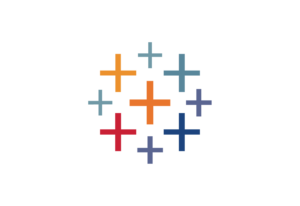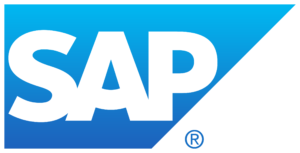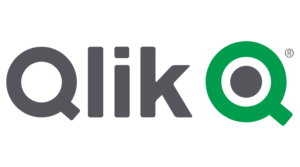Whether you’re trying to learn more about past and future performance for your line of business or you’re trying to automate a business tool or process with machine learning (ML), in-depth data knowledge and analytics fuel the engine behind these efforts. Data analysis can be performed manually by data scientists and basic office productivity suite technologies, but specialized data analytics tools and software offer additional support, deeper insights, and automated reporting for data teams.
The data analytics software market is expected to reach $132.9 billion by 2026, growing from 2019’s projected value of $23 billion, according to Market Research Future. While much of this growth is seen in big tech companies with artificial intelligence (AI) and ML-focused objectives, industries like manufacturing, retail, and healthcare are also increasing their data analytics investments to improve customer experiences and operational efficiencies. Read on to learn how data analytics solutions can benefit your particular business and what features you should consider for optimal data results.
Read Next: Top Machine Learning Companies
A Closer Look at Top Data Analytics Solutions
- What is Data Analytics?
- What are Data Analytical Tools?
- Top Data Analytics Software Features
- Best Data Analytics Software Solutions
- Who Needs Data Analytics Software?
- Enterprise Network Benefits of Data Analytics Tools
What is Data Analytics?
Data analytics encompasses more than just data analysis, or the practice of preparing data for initial understanding. Data analytics takes data analysis and expands upon that foundation, focusing on collecting, organizing, storing, segmenting, and visualizing data in ways that make it more useful for companies that want to apply data knowledge to business practices.
Data analytics can refer to a variety of methodologies, strategies, and approaches to data, but most data analytics processes fall into one of the following four categories:
- Descriptive analytics: Descriptive analytics is the analytical practice where historical data is gathered and reviewed to determine what happened. Because descriptive analytics is focused on basic insights, it is most commonly applied to raw data to find foundational meaning for future studies.
- Predictive analytics: Predictive analytics uses historical data and trends to predict future outcomes for a given data set. Predictive analytics often includes data modeling, AI/ML, and data mining to achieve deeper insights.
- Diagnostic analytics: Diagnostic analytics searches for the “why” behind the outcomes you find in a data set. Diagnostic analytics is typically applied after descriptive analytics when determining business performance and future strategies.
- Prescriptive analytics: Prescriptive analytics often combines the data insights found in predictive and descriptive analytics to make intelligent business decisions from past and present data models.
Learn more about data analytics on Datamation: Best Data Analysis Methods
What are Data Analytical Tools?
Data analytical tools are the software solutions that make it possible to analyze and mine big data stores for different business metrics. In the case of AI/ML, data analytics tools can also be used to optimize training data for algorithms and models. Data scientists use data analytics tools to process a variety of queries about a data set, but because the tools help with process automation and data visualization, data scientists rely on this kind of software to perform data analysis at scale. Data analytical tools often work in combination with data warehousing and cloud computing infrastructure, making them helpful assets for big data management across enterprise environments.
Top Data Analytics Software Features
Data analytics software runs the spectrum of basic to highly complex features. In order to get the most out of your data analytics software, look for solutions that include these features natively or through simple integrations:
- Data visualizations and graphs: Data analytics is most effective when the results can be explained and visualized for a variety of stakeholders. Data visualization, data modeling, and other graphing features make it easier for non-data specialists to understand and apply data insights.
- Dashboards and usability features: The best data analytics tools make their insights easy to find and use. Unified, single-pane-of-glass dashboards are particularly helpful elements that allow users to view all different data metrics simultaneously, making it easier for them to navigate to the more in-depth data sets and analytics they want. Embedded analytics is another popular usability feature that embeds data insights natively in the other apps your employees use to gather data.
- Automation: Data entry, data cleaning, and other basic data management features have traditionally been handled by human staff. To save time, however, many data analytics tools now offer automation for data management and monitoring so that employees can focus their time on more strategic work.
- Compatibility and integration with other data and cloud tools: When working with big data, data analytics is only one piece of the data optimization puzzle. Look for tools that either natively offer or easily connect to other data tools for data security and compliance, data storage and warehousing, and database management, to name a few.
- Augmented data analytics for AI/ML: Data analytics software is one of the most important elements for training AI/ML tools and understanding the resulting data they provide. As AI and ML use cases continue to grow, look for tools that advertise how they use AI to optimize their platforms.
More Data Visualization Solutions to Consider: Best Data Visualization Tools & Software
Best Data Analytics Software Solutions
Tableau 
Tableau, a Salesforce entity since 2019, is considered one of the top data analytics platforms on the market for its user-friendly dashboards and data visualizations. It offers a wide variety of capabilities to users and is compatible with several other enterprise environments and tools. Most notably, Tableau Online offers flexible deployment solutions that work well in a multicloud environment.
Features:
- Data flow management, scheduling, and monitoring
- Predictive modeling with Einstein Discovery tool
- Programmatic content migration available
- Advanced server deployment monitoring and quality warnings
- Interactive dashboards and data visualizations
Top Pro: Data visualization and data storytelling are customizable and user-friendly.
Top Con: Tableau is one of the more expensive tools on this market, and some customers describe their customer support as a pain point.
Sisense 
Sisense is considered one of the top tools for power users with previous data platform management experience due to its advanced features and capabilities with more complex data workloads. Many users select Sisense for its cloud-native infrastructure that works well with most cloud and container applications. Users also praise the speed and depth that Sisense queries can provide for cross-application analysis.
Features:
- AI-led 360º view of cloud, in-app, and/or on-premises data
- Sisense-managed warehouse available
- Visual-based data modeling
- Data caching with analytics database
- AI-powered exploration pathways for deeper dive into data sets
Top Pro: Sisense Labs is a strong innovator, now offering some of the best AI/ML algorithms for this market.
Top Con: While many users appreciate the ElastiCube analytics database tool, some users have expressed that errors with that tool cause platform-wide errors, such as server failures.
SAS Viya 
SAS Viya is one component of a large data management portfolio offered by SAS, providing resources from data preparation to data visualization and reporting. Many users choose SAS Viya because the platform offers a wide variety of data management features while also offering some of the most advanced AI and ML capabilities on the market. Although the SAS portfolio of data tools is too expensive for some companies, many enterprises choose this tool for its holistic approach to data management.
Features:
- Interactive data exploration, data discovery, and predictive modeling
- Embedded machine learning and deep learning capabilities
- Smart visualizations and interactive reporting
- Modeling capabilities for text analytics, forecasting, optimization, and econometrics
- Real-time and batch management of data decision flows
Top Pro: Users praise the speed and detail that the tool provides for large datasets.
Top Con: Certain visualizations, such as KPI cards, are not available when compared to other top analytics solutions.
Microsoft Power BI 
Microsoft Power BI is a longtime favorite for enterprises that want self-service data insights and business intelligence. Microsoft’s longstanding relationships with other enterprise tech companies mean that Power BI users can easily connect with a large portfolio of global data centers and national clouds, which is particularly useful for compliance and regulatory management. Power BI is also a top data security performer, offering features like sensitivity labeling, bring your own key (BYOK), service tags, and other Microsoft Azure-based security features.
Features:
- Integration with Excel and other prebuilt, custom data connectors
- Top tier data security features include sensitivity labeling, end-to-end encryption, and real-time access monitoring
- Interactive dashboards and reports available with a variety of data visualization formats
- Cloud and on-premises versions available
- Organization-wide, free access to basic BI capabilities through Power BI Desktop
Top Pro: Power Query and other data quality features are user-friendly and resemble familiar workplace tools like Excel.
Top Con: The on-premises version of Power BI does not have the same number of advanced features as the cloud version, and the cloud version must be run in Microsoft Azure.
TIBCO Spotfire 
TIBCO Spotfire is a full-service data analytics software solution that’s known for its wide variety of data visualizations and supported mediums. While also providing more traditional data visualizations and insights, Spotfire is one of the top solutions for immersive visual analytics, streaming analytics, and geoanalytics.
Features:
- Brush-linked data visualizations for real-time updated insights across separate data sources
- Ability to build custom analytics apps with the Spotfire Mods framework
- Analysis of both historical and streaming data simultaneously
- Spotfire geoanalytics offers in-depth analysis for location-based data
- Smart machine learning workflows for data preparation and task automation
Top Pro: Extensive customizations and integrations are available, especially due to their integration with Python and R bundled engines.
Top Con: Users specifically note that data visualizations look outdated and are not very UX/UI-driven.
Google Data Studio 
Google Data Studio offers one of the lowest learning curves on this list, with many of its top capabilities available in the free version. Users often select this tool because of its affordability and its connectivity with other Google cloud applications. Much like other tools in the Google toolkit, Google Data Studio makes it easy for users to collaborate with both internal and external stakeholders, which further democratizes data for an enterprise.
Features:
- Data templates available for self-service analytics
- Wide variety of native integrations available with other Google tools, several social media platforms, and major database platforms
- Drag and drop report editor for data visualization editing
- Support offered for 37 languages and 59 international currencies
- Instant report sharing available
Top Pro: Google Data Studio is one of the most collaborative tools available, making it possible for both internal and external stakeholders to share and edit reports as needed.
Top Con: Google Data Studio works better for less complicated and smaller data sets; users have commented on the bugs, slower speeds, and limited capabilities they experience when they attempt to work with big data sources.
MicroStrategy 
While it’s also considered a high-performance platform on its own, MicroStrategy uses API connectors to connect with many competing platforms and share their strengths. This API connector strategy, along with their approach to embedded analytics across enterprise platforms, makes MicroStrategy a top choice for companies that currently manage their data in silos.
Features:
- Drag-and-drop data feature available
- Data storage available through MicroStrategy Cubes
- Predictive and agile analytics features
- Customization available through SQL and SDK
- High availability of data connectors in the tool
Top Pro: MicroStrategy offers HyperIntelligence, a feature that embeds both insights and actions in external applications used by a company.
Top Con: Several users have commented on the outdated user interface (UI) and overall design of the tool.
SAP Analytics Cloud 
The SAP Analytics Cloud is one layer of SAP’s Business Technology Platform, which is the primary reason why this tool is preferred on the market for end-to-end visibility on business intelligence initiatives. This SAP tool offers augmented analytics, self-service analytics, and AI/ML-powered analytics, but it is most widely recognized for its advanced predictive analytics offerings.
Features:
- Augmented analytics with AI, ML, and NLP-driven capabilities
- Data filtering and drilling for interactive data visualizations and stories
- Automated data cleansing available
- Data models, widgets, and templates are readily available and can be created over time
- Agile governance with metadata information
Top Pro: SAP’s conversational analytics offering makes it easy for non-experts to submit and review data queries on the platform.
Top Con: Some users have expressed interest in greater external collaboration capabilities, such as those found in Google Data Studio.
Qlik Sense 
While many data analytics solutions focus on future outcomes based on past data insights, Qlik Sense advertises itself as a platform for “Active Intelligence,” or real-time insights that can immediately inform business decisions. With its hybrid cloud, SaaS, and mobile capabilities, Qlik Sense is also a flexible option for different user interfaces and environments.
Features:
- Interactive dashboards, reporting, and self-service data visualization
- AI-powered data insights and data preparation with Insight Advisor
- Active Intelligence for “in-the-moment” data insights
- Search-powered data discovery and conversational analytics
- Qlik Sense Mobile fully native app for iOS and Android
Top Pro: Qlik’s platform is one of the most mobile-friendly data analytics tools on the market.
Top Con: Qlik offers only very limited version control features.
Tools to Help You Protect Your Data: Best Data Loss Prevention (DLP) Software & Tools
Who Needs Data Analytics Software?
Data analytics software is an umbrella term that offers features for a variety of price points and operational complexities. Regardless of your industry or specific use case, you’ll likely need this type of software if you find yourself in one of these scenarios:
- You’re an enterprise that works with big data and wants deeper, quicker, and/or more accurate insights.
- You’re an enterprise that wants cross-department insights, gaining business intelligence that uses data across sales, marketing, finance, etc.
- You’re a team that wants to more efficiently manage the data of a large portfolio of customers or prospects.
- You’re a company that is looking toward AI/ML solutions in the future.
Tips for Data Quality Management: Best Deduplication Software for Managing Data
Enterprise Network Benefits of Data Analytics Tools
Enterprise networks in particular work with a lot of data that can be manipulated for deeper business insights and future planning. If your organization is still on the fence about investing in data analytical software, consider some of the following benefits that organizations reap when they supplement their data management efforts:
Customer Relationship Management
A more catered customer experience becomes possible when you work with software that provides a deeper understanding of customer data. This knowledge can also extend to prospective customers and third-party partners.
Business Intelligence
In more traditional data analysis, you’ll likely miss a data set or connection that could be helpful for better understanding what’s happening in the business. Data analytics software offers more number-driven insights into business performance and eliminates the human error that usually comes with predictive analytics and business intelligence.
Interoperability
The majority of data analytics platforms integrate well with other enterprise software that you use. This means that you can easily mine data knowledge from other tools, especially if you use a data analytics solution that offers embedded analytics as a feature.
Data Knowledge for the Future
Advanced data software solutions are often considered one of the most important enterprise tools for the future, especially as more organizations become interested in developing their own AI and ML models. With specialized data analytics and management software, you can better understand your existing data and how it can be optimized to train artificial intelligence solutions in the future.
Develop the Right Infrastructure to Secure Your Data: Best Backup Software for Securing Your Data











